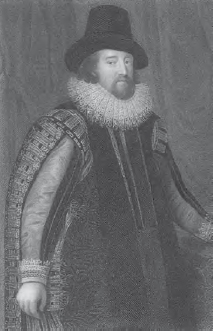Skeptical and Natural PhilosophyFrancis Bacon and the Scientific Revolution |
What were the new logic and four types of idols made famous by Francis Bacon’s Novum Organum? |
In his New Atlantis (1627), Francis Bacon (1561–1626) described a social organization for scientific research. His Novum Organum (1620) presented a new logic of induction, which would take the place of both Aristotelian logic and a simple collection of facts. The aim was to discover real natural laws or reliable generalizations about aspects of nature
Bacon’s system became famous for the obstacles to acquiring such knowledge, which he described as four kinds of idols. First were idols of the tribe or natural tendencies of thought, such as a search for purposes in nature or reading human desires and needs onto natural things and events. The second were the idols of the cave or the idiosyncrasies and biases of individuals due to their education, social background, association, and the authorities they favored. The third type were idols of the marketplace or meanings of words taken for granted when the words themselves did not stand for anything that existed in reality. And, finally, the idols of the theatre were the influence of theories that had already been widely accepted.

